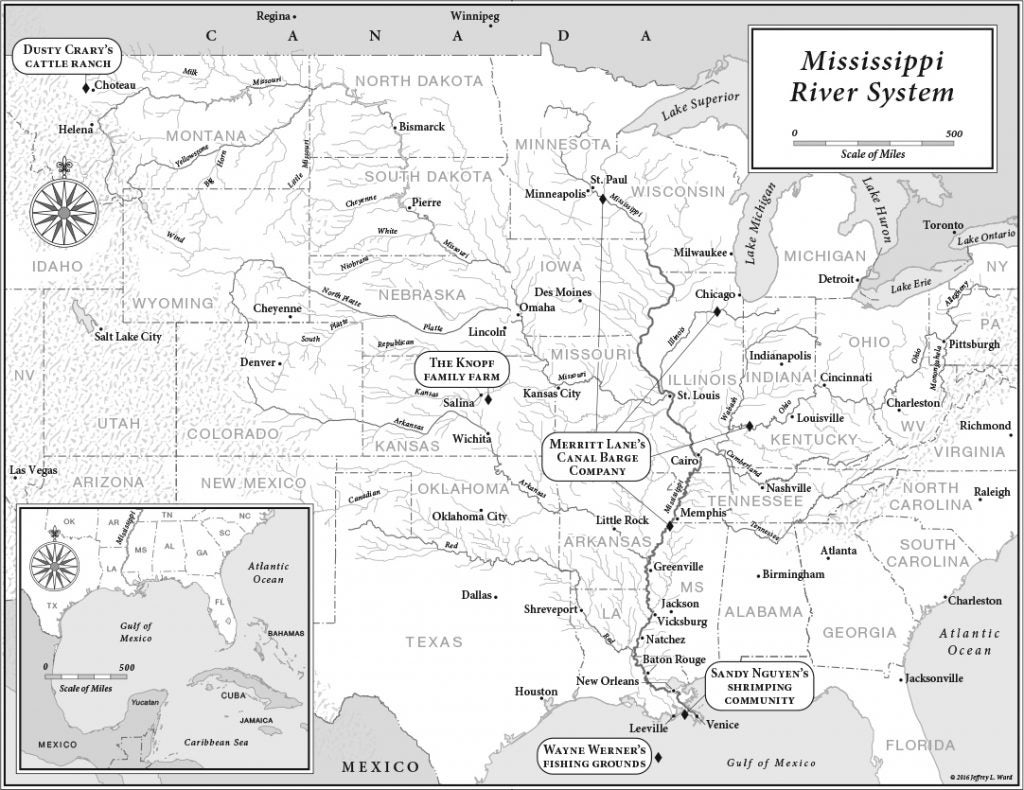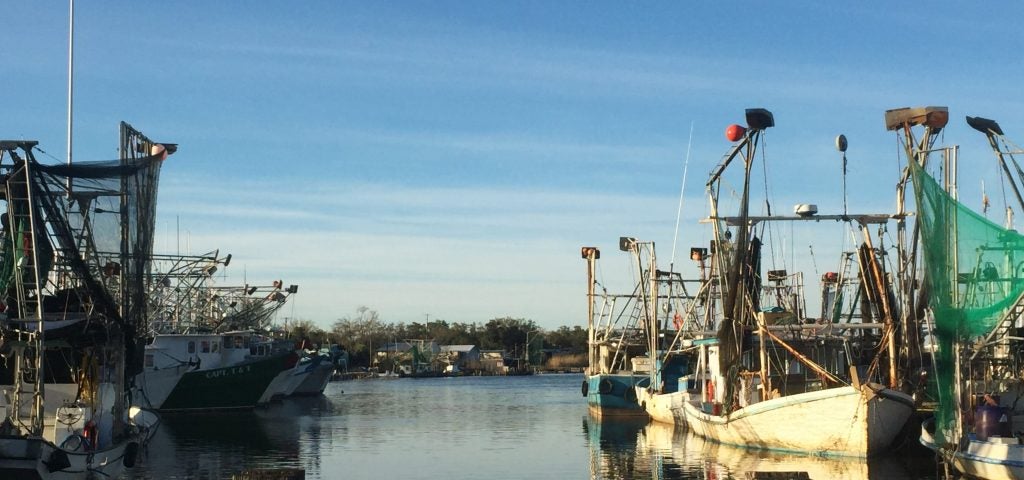Conservation Heroes of the Mississippi River Delta Profiled in New Book
In her recent book, “Rancher, Farmer, Fisherman: Conservation Heroes of the American Heartland”, author and EDF writer Miriam Horn takes a close look at unlikely conservationists living in one of the largest and most economically productive ecosystems in the world: the Mississippi River watershed.
Horn spent more than three years researching and writing this book, and it shows in her personal descriptions of these heroes and deep knowledge of the environmental issues that concern them.
Despite their disparate locations, backgrounds and lines of work, the men and women profiled have all seen how the changes in our environment have affected their communities and livelihoods. They’re driven by a forward-looking sense of purpose, making them stewards of both their communities and the environment on which they depend. Like the Mississippi River connects the mountains of Montana to the wetlands of Louisiana, stewardship connects the stories in this book.

The Mississippi River watershed, the third largest in the world, drains about 40 percent of the continental United States – spanning 31 states, 2 Canadian Provinces and 7,000 tributaries from the Rockies to the Appalachians. Credit: Rancher Farmer Fisherman
Upriver, Downriver
Starting in the northernmost reaches of the basin, not far from the Missouri River, Dusty Crary works to protect great expanses of ranching land and iconic, untamed wilderness. Down on the Kansas plains, on a tributary of the Platte River, Justin Knopf challenges the prevailing notions of large-scale agriculture through a commitment to no-till farming in the name of soil conservation and reducing nutrient runoff.
Farther downstream, we meet Merritt Lane, president of Canal Barge Company – familiar names in south Louisiana – and Sandy Nguyen, a small-business consultant whose family has depended on fishing as a way of life in both the Mekong and Mississippi Deltas.
Merritt and Sandy have an interest in seeing coastal Louisiana restored because of their connections to the land and its people. They each witnessed their communities and industries devastated by Hurricane Katrina and now strive to help build resiliency into both the natural and social systems.
Finally, out in the deep waters of the Gulf of Mexico, we meet Wayne Werner, a commercial fisherman who brought together fishermen, environmentalists and the government to establish smart fishing regulations that sustain Gulf fish populations and fishermen’s livelihoods.
Old Man River
Merritt, Sandy and the industries they work with are on the frontlines of a changing climate. As one of Merritt’s captains observes, temperatures have been rising and rain patterns changing, with less rain and fewer rain events – but when it does rain, it pours. When the river is too low, rises too quickly or too high, barges can’t operate, which is what happened during the flood this past January.
Trucks aren’t an effective replacement for barges when the river becomes too volatile. Each barge carries as much cargo as 144 semi-trucks. Imagine the added pollution, traffic and wear and tear on roads if all of those shipping containers had to be transported by trucks!
Merritt is motivated to work with Louisiana’s Coastal Protection and Restoration Authority on their Coastal Master Plan, because he understands the connection between shipping and navigation, the national economy and the health of the coast. He knows that restoration of the environment is necessary to build climate resiliency into industry and to keep the economic lifeblood of our country going.

Coastal restoration is essential to the future of fishing communities, like this one in Dulac. Credit: Estelle Robichaux
Where the River Meets the Sea
Sandy sees the same connection between a restored Mississippi River Delta and resiliency of fishing communities – a healthy ecosystem means protection from waves and high water, food for the table and to sell, and a future for their children and grandchildren.
With her enterprising spirit, sharp mind and perseverance, Sandy helped secure dozens of loans for individuals and small businesses in the wake of Hurricane Katrina to help her community repair its equipment and get back to shrimping within months of the storm.
Sandy knows that Louisiana’s productive wetlands are under threat, and that even when restoration does happen, the ecosystem will never be what it was before. She knows her fishermen need to diversify and prepare for the future – which is why she developed a training program to certify them to do coastal restoration work and to be first responders in emergencies, like when the BP oil spill happened.
Meet the Author
Rancher, Farmer, Fisherman is a touching and personable story about unlikely conservation heroes doing what they believe is right for their families, communities and the environment.
Learn more at www.rancherfarmerfishermen.org or join us and author Miriam Horn at Octavia Books (513 Octavia St.) on October 26 at 6PM.